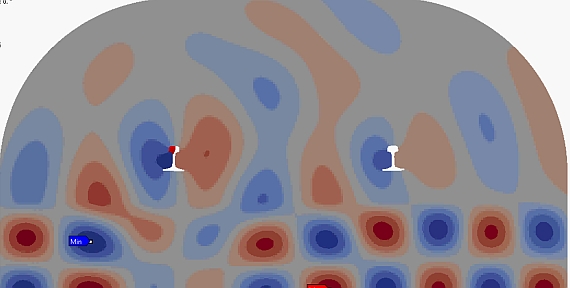Fluid Structure Interaction
The development of new materials and systems is the tool in the Engineers' hands to positively affect the comfort and safety of humans in the built environment. The modeling of sound propagation in space under realistic conditions (including thermal, turbulence, etc.) is at the base of our understanding of how sound is distributed and how noise affects the population. The interaction of sound waves with solids, at their surfaces is at the base of phenomena related to the emission and absorption of sound. Our work in the field of Fluid Structure Interaction (FSI) allows us to make realistic predictions of the emission of noise (e.g. rolling noise of trains) or the ability of foams to absorb it effectively.

The interaction of the rails, sleepers and ballast with the surrounding air is at the base of the emission of rolling noise of traveling trains and its subsequent propagation in the environment.


-
Share
